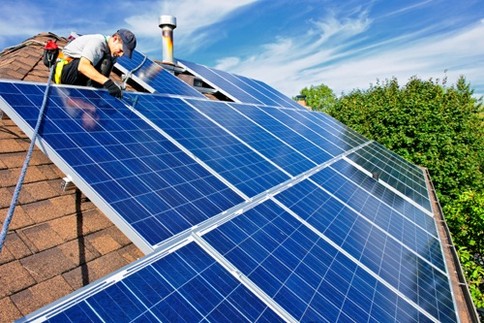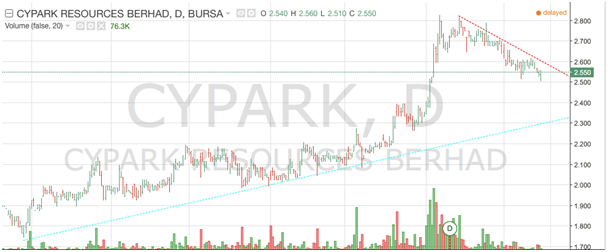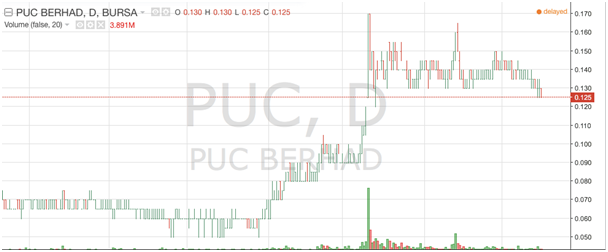The Malaysian government and the Sustainable Energy Development
Authority (SEDA) have revealed its long-term goal to generate 24% of the
country’s electricity from renewable sources by 2050.

They are targeting a solar energy production capacity of 1000 MW by 2020 then to over 17 GW by 2050 from 338 MW currently.
The recent launch of the NetMetering program will enable homeowners as
well as industrial and commercial sites to sell surplus solar energy to
utilities.
If successful, the move will drive demand for solar panels, giving renewable energy companies a beachhead into a new market.
1. Cypark Resources Berhad (KLSE: 5184)

Cypark is already a contender in the solar space with an electricity production capacity of 30.6 MW.
The company offers construction, power production, environmental
engineering and energy storage services, all of which are increasingly
indispensable to its viability in the solar energy industry.
The company is planning to develop its solar capacity further. It
distributed 25% of its benefits as dividends maintaining its ability to
invest and keep up with the increasing market size.
Cypark’s stock price is near its 52 weeks high at RM2.55, up 25% from
RM2.038 at the start of the year. Its price-to-earnings (P/E) ratio also
rose from 9.8 to 12.34.
The company has strong financials and may have the potential to rebound after a technical correction.
2. PUC Founder Berhad (KLSE: 0007)

Our 2nd stock is on a smaller scale named PUC Founder and its listed on
the ACE market. It has registered 31% growth in net income even when
revenue decreased by 6% to around RM25 million in revenue.
One should take note that aggressive capital expenditure have resulted in a low RoE of 1.71% compared to 11.71% for Cypark.
PUC’s stock has doubled in price since the start of the year sending
its P/E to a lofty ratio of 50+. Due to its small market capitalization,
the share price seems to be rather choppy relative to more established
companies so investors need to be aware.
3. Malakoff Corporation Berhad (KLSE: 5364)
Despite being the largest out of the three (in size), Malakoff is not
really a direct player in this solar race. This is because of of its
diverse business model based on coal-based power generation and water
treatment services.
It is adequately financed with a long-term debt structure and
decreasing leverage levels. However, it is still trying to enter the
solar market now and might totally miss out on the bold government led
bandwagon.
Malakoff’s share price is near its 52 weeks low as earnings have
dropped from the previous year. If the trend continues, the dividend
payout ratio can give way because it currently stands at >95% of net
income. A As a result the current 6.80% dividend yield, while enticing,
will shrink.
Conclusion
Cypark looks like the safest choice to invest in the solar industry
with its established experience and solid finances. It is on the right
track to establish itself as a reference in the field.
On the other hand PUC offers more promising potential for capital gains
with a smaller base. Thanks to its small size, it is far from
saturation and is nimble enough to grow at a faster pace. It is more
risky however, as its share price can deflate at any moment following
bad news.
SmallCapAsia.com is a website focused primarily on undervalued gems that can generate Big, Fat Returns for investors. Our Slogan is simple: Start Small, Win Big!
Subscribe to our FREE e-newsletter to get a regular dose of investing insights not found elsewhere!
http://klse.i3investor.com/blogs/small_cap_asia/130340.jsp
